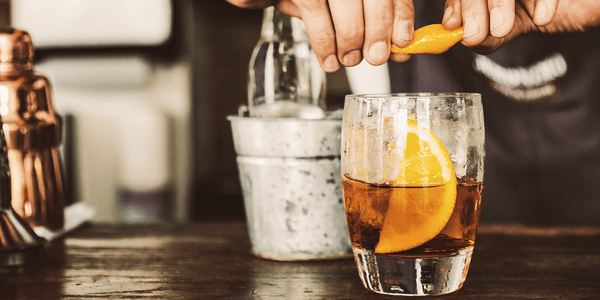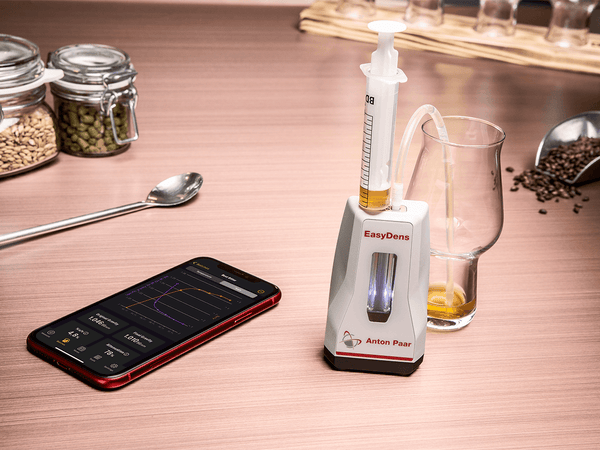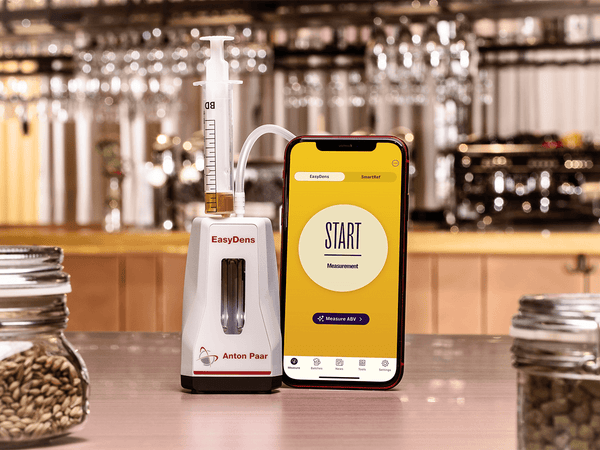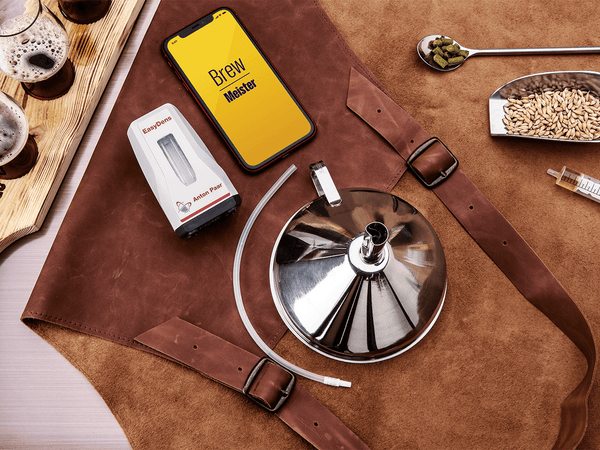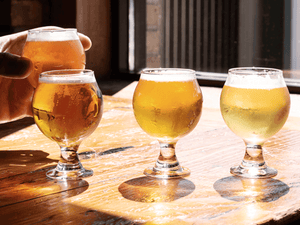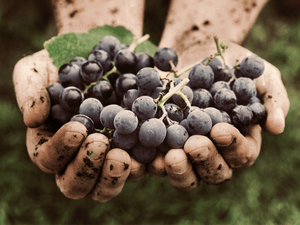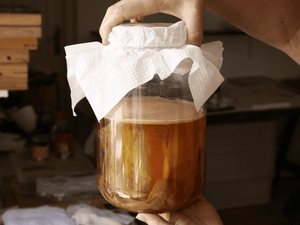For your pure spirits
The EasyDens Digital Density Meter delivers highly precise results in seconds and allows you to determine the alcohol content of your sugar-free spirits with an accuracy of 0.5 %v/v.
In combination with the SmartRef Digital Refractometer, the measuring bundle turns into an Alcohol Meter and determines the alcohol content of sugar-containing spirits like liqueurs with an accuracy of 0.6 %v/v.
The linked Proof Meister mobile app for iOS and Android guides you perfectly during your distillation process. Proof Meister keeps measuring, collecting and summarizing data quick and simple. Pick your ideal measuring solution now and elevate your craftsmanship to the next level!

With a small sample volume of only 2 mL EasyDens and the Proof Meister app deliver highly precise results with Automatic Temperature Compensation (ATC):
- ABW [%w/w]
- ABV [%v/v] at current temp.
- ABV at 15 °C [%v/v @15]
- ABV at 20 °C [%v/v @20]
- Proof UK at 20 °C
- Proof US at 60 °F
- Density [g/cm³] at current temp.
- Temperature [°C], [°F]
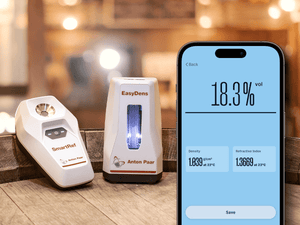
EasyDens & SmartRef Liqueur Combo
Take precise ABV readings of your liqueur and all sugar-containing spirits!
The Proof Meister app now allows you to measure the alcohol content of your liqueur directly with an accuracy of 0.6 %v/v using the combination of density and refractive index measurement.
EasyDens Alcohol Hydrometer for your distilling process
The possibilities of producing schnapps and other hard alcohol like vodka, whiskey, or gin are huge and there are no limits to your creativity. The desired quality of the final product is determined by the type of raw materials used. You can use a wide range of either starchy-based ingredients or sugary fruit, whatever suits your taste.
Depending on what starting ingredients you choose, the process starts differently. Starchy-based materials are mashed, to activate germination to produce enzymes, which transform the grain starches into fermentable sugars. Fruits on the other hand are crushed and pressed to extract their juices.
When this step is completed, the fermentation can start. By simply adding yeast, the sugar is converted to alcohol and CO2.
Once enough alcohol has been produced, it is ready to be distilled. In the distillation process, the desired liquid fractions are separated from the ones you don’t want to end up in your drink.
This separation happens due to the fact, that different types of liquids boil at different temperatures. The more volatile solvents, which are called “heads”, are boiled off first. These “heads” contain ethereal aromas and substances like methanol, which are harmful to humans and therefore are to be discarded. The type of alcohol you want to capture is ethanol alcohol, which has a boiling point of 78.37 °C (173.1 °F) and is also referred to as the “heart”. At the end of the distillation, the so-called “tails” are given off. The tails have increasingly lower amounts of alcohol and higher amounts of bitter aromas, which is why they are either discarded or distilled once again.

The efficiency during the distillation process and the alcohol content of your finished distillate can easily be measured with EasyDens and Proof Meister with an accuracy of 0.5 %v/v.
The distiller decides when to cut from “heads” to “heart” and afterward from “heart” to “tails”, to create his desired taste with the finest aroma from the mash and to remove unwanted components from the main fraction.
Density and alcohol measurements during the distillation process are important to help you gain experience and knowledge in terms of cutting off the fractions at the right time.The measured parameters help not only to improve the quality of the product but also give important information about the strength of the spirit for every step of the distillation.

Potato vodka with EasyDens
Vodka can be distilled from any agricultural product containing sugar or starch. Some distilleries make vodka from grapes, hemp seed, and coffee pulp. But potatoes have become popular as a substitute mash for vodka, giving vodka an earthy tone.
Follow the fermentation process of the potato mash with EasyDens and measure the alcohol content of your distillate!
